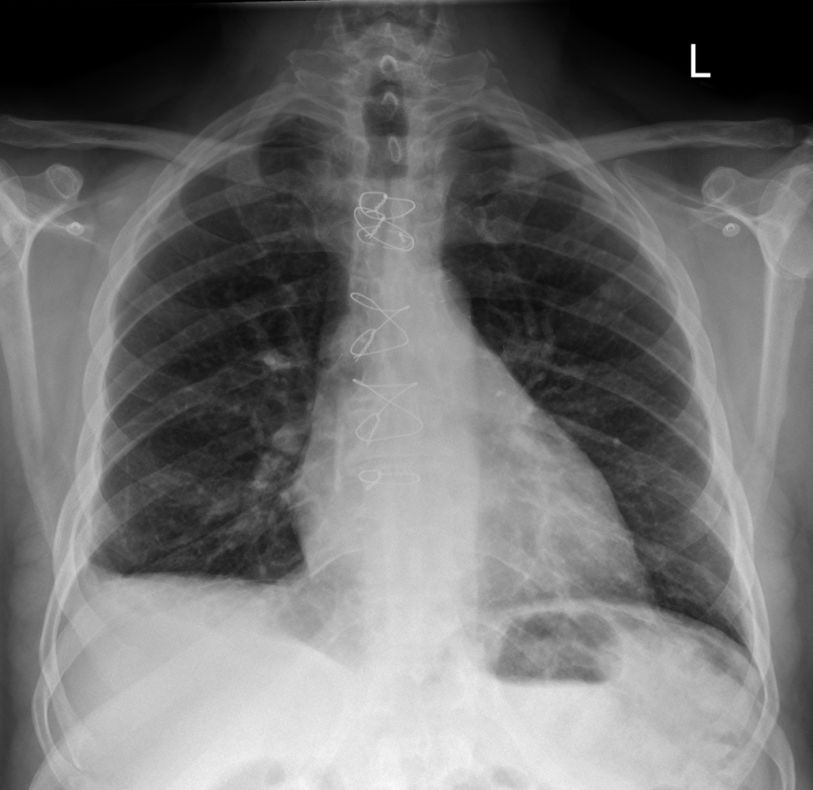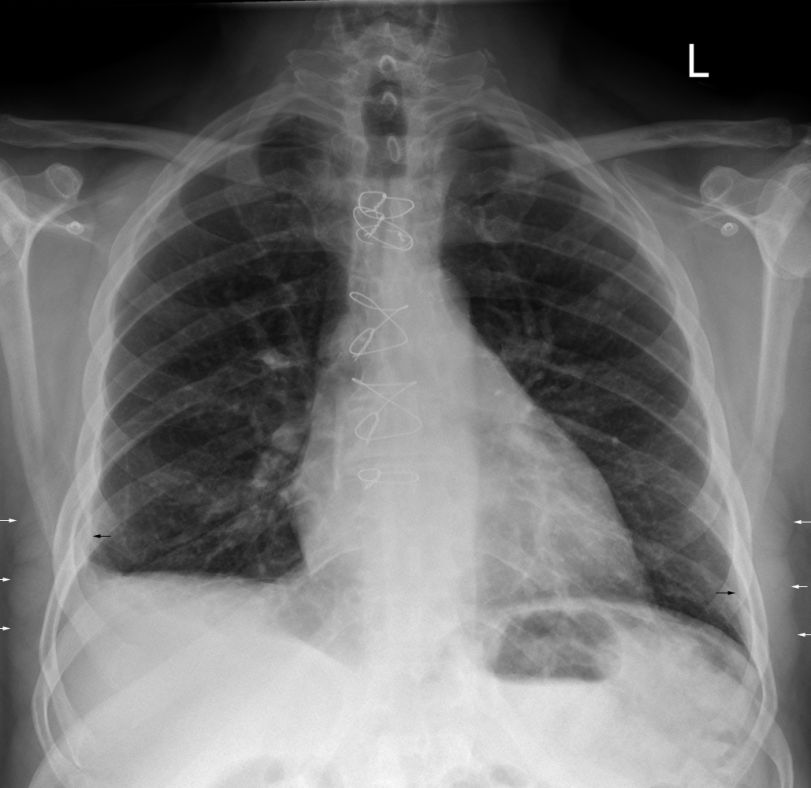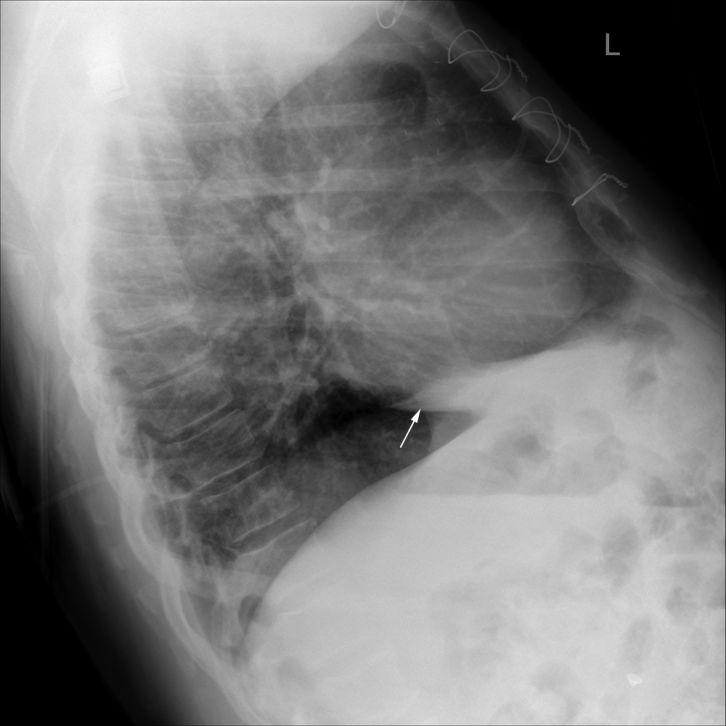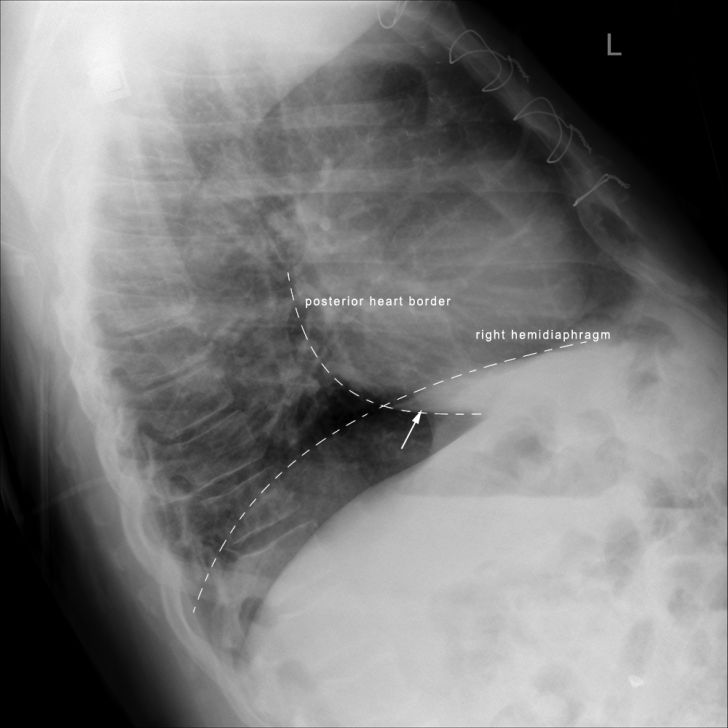Combination Shadows
Jump to navigation
Jump to search
Introduction
False Effusions
... back to the Wikiradiography home page
...back to the Applied Radiography home page
The term combination shadow refers to a plain film appearance that is the result of a combination density of two separate anatomical structures. It could be argued that all plain film images are combination shadows in as much as three dimension anatomy is represented in two dimensions. The term combination shadow tends to be reserved for structures that are the result of combined opacity that could represent pathology or be otherwise unexplained or confusing
False Effusions
... back to the Wikiradiography home page
...back to the Applied Radiography home page



